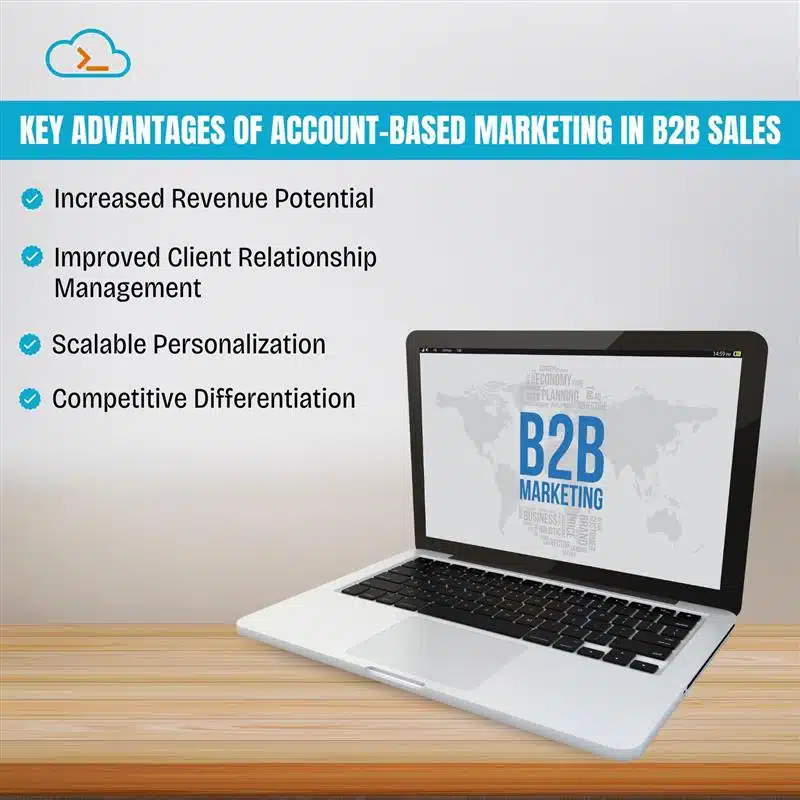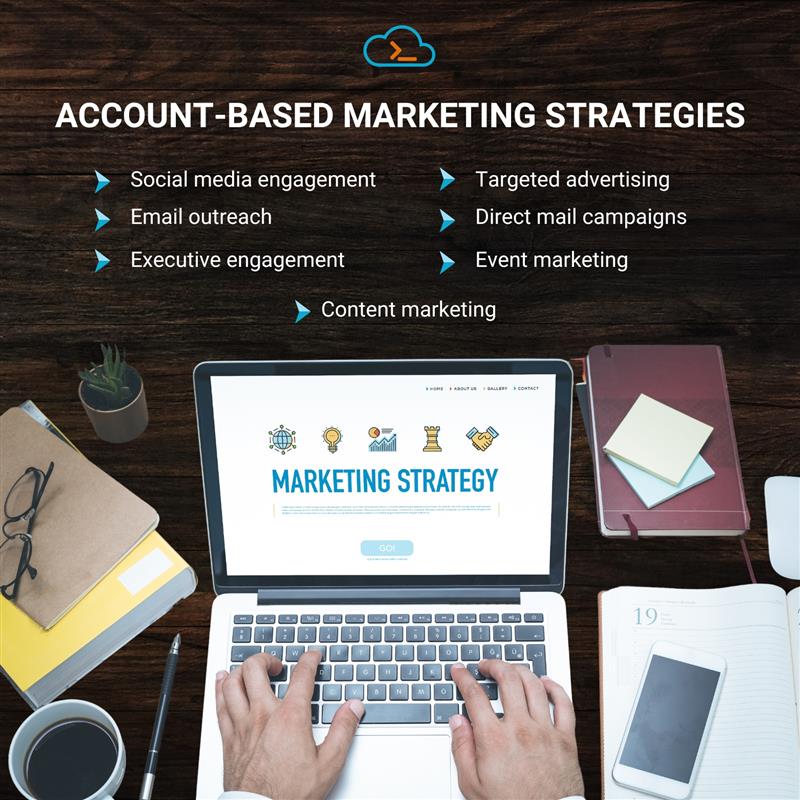
Future Proofing B2B Sales: Why Account-Based Marketing Is The Key
Today, B2B companies are facing the constant challenge of meeting the buyer’s expectations and navigating the rising competition in the digital universe. Traditional sales strategies are becoming less effective, leading to a decline in sales. To future-proof B2B sales, companies are turning to Account-Based Marketing (ABM), a powerful, highly targeted approach that aligns sales and branding efforts to generate more qualified leads, maximize revenue, and strengthen relationships with premium accounts. Let’s dive into how ABM redefines B2B sales, what advantages it brings to the table for building a long-term growth, and the keys to implementing an effective ABM strategy.
Key Takeaways
- Focus on High-Value Accounts -ABM directs resources to high-value clients, maximizing ROI and fostering long-term relationships.
- Enhanced Engagement and Retention – Personalized strategies align marketing and sales, boosting engagement and customer loyalty.
- Data-Driven Optimization – ABM uses data insights to tailor campaigns, increasing conversions and strengthening client connections.
The Shift To Account-Based Marketing (ABM)
Account-based marketing (ABM) is a focused marketing strategy in which sales and advertising teams work together to focus their efforts on a defined set of target accounts. Instead of using a one-size-fits-all approach, ABM focuses on identifying and supporting important accounts with tailored campaigns and insights to meet the specific needs of key decision-makers.
Experience impactful growth with the Best Digital Marketing Agency in India, delivering tailored strategies that drive real results for your business growth.
Account-Based Marketing is Key to Future-Proofing B2B Sales
This account-focused approach is an ideal solution for B2B sales, where relationships, client-specific insights, and personalized solutions are vital to closing high-stakes deals and driving revenue growth.
- Focused Resource Allocation for High-Value Accounts: Account Based Marketing enables companies to focus their resources more effectively. Sales and advertising campaigns are concentrated on high-value clients and target accounts with the greatest profit potential. By directing personalized branding efforts and tailored sales strategies to these accounts, companies can maximize ROI, reduce resource waste, and build relationships with clients who are more likely to yield long-term growth.
- Enhanced Customer Engagement and Retention: By aligning the promotional and sales teams, ABM creates a seamless customer experience, fostering meaningful engagement with decision-makers. ABM enables companies to use statistical insights to deliver specific messaging and solutions that resonate with the target audience and address their challenges and goals. This level of engagement builds trust and satisfaction, helping retain valuable clients and increasing lifetime customer value.
- Data-Driven Insights for Personalized Marketing Efforts: ABM leverages customer relationship management (CRM) systems, Marketing technology tools, and data analytics to gain insights into the needs and behaviors of targeted accounts. Using interaction metrics, sales and development teams can adjust strategies to deliver customized solutions at each phase of the sales funnel, increasing the chances of conversion and deepening relationships with major stakeholders.
- Integrating Sales and Marketing Teams: ABM ensures that both sales and marketing teams are aligned, which is essential for delivering consistent messaging, seamless customer interactions, and timely follow-ups. This alignment helps both teams achieve shared objectives and streamline the sales process, enhancing productivity and improving resource management.
Implementing an Effective ABM Strategy
Implementing an account-based marketing strategy effectively requires careful planning, a clear understanding of the target accounts, and an ongoing collaboration between sales and marketing. Following are the steps to guide you to implement ABM in a B2B environment:
- Identify and Segment High-Value Target Accounts: Start by identifying accounts with high revenue potential or those that align with your business models and goals. Factors such as revenue size, industry, and engagement history can help define your ideal target accounts. Segment these accounts based on their specific needs and pain points to deliver highly relevant marketing and sales initiatives.
- Gather Analytical Insights on Key Stakeholders: Use CRM and Marketing technology tools to collect data on major stakeholders within these accounts. Understand the decision-maker’s goals, challenges, and preferences to create individualized campaigns that speak directly to them. Analyzing Evidence-based insights allows you to refine your approach continuously, tailoring content to each account’s needs.
- Develop Customized marketing initiatives: Design campaigns that address each account’s specific pain points and goals. Personalized messaging enhances the likelihood of resonating with executives, making it easier to generate leads, foster engagement, and close deals. Use online marketing tactics such as email, targeted advertising, and content marketing to reinforce your ABM efforts.
- Align Sales and Service Teams for Seamless Execution: ABM requires that sales, marketing, and service teams work closely together. By coordinating efforts across teams, companies can ensure a cohesive experience for target accounts, building trust and improving customer satisfaction. Frequent meetings and performance reviews can help maintain alignment and optimize efforts.
- Leverage Engagement Metrics to Evaluate Success: Engagement analytics, such as open rates, click-throughs, and response times, can help assess the effectiveness of ABM campaigns. Track these metrics to identify opportunities for improvement and adjust your approach as needed. The ongoing analysis allows for continuous refinement, ensuring your strategy remains relevant and impactful.
Boost your brand’s online presence and drive results with expert Digital Marketing Services tailored to your business needs.

Key Advantages of Account-Based Marketing in B2B Sales
- Increased Revenue Potential: By focusing efforts on key accounts, ABM boosts conversion rates and increases deal size, leading to greater revenue generation.
- Improved Client Relationship Management: Tailored solutions and ongoing engagement strengthen relationships with target accounts, driving loyalty and retention.
- Scalable Personalization: With marketing automation and data insights, ABM makes it possible to deliver personalization at scale, catering to multiple accounts without compromising relevance.
- Competitive Differentiation: ABM’s targeted approach positions companies as strategic partners to their clients, differentiating them from competitors.
Enhance your brand’s visibility and engagement with professional Content Marketing Services tailored to reach and resonate with your audience.
Conclusion
In a rapidly evolving B2B landscape, Account Marketing has become an essential tool for long-term sustainability sales strategies. By aligning sales and marketing initiatives, personalizing customer experiences, and focusing on analytical insights, ABM enables businesses to build stronger, more profitable connections with major accounts. For companies aiming to remain competitive and drive sustainable growth, ABM isn’t just a marketing tactic—it’s the key to long-term success.
Frequently Asked Questions
1. What is B2B Account-Based Marketing?
B2B ABM is a strategic approach that involves aligning marketing and sales efforts to target premium accounts with personalized campaigns, aiming for a deeper relationship and greater ROI.
2. How does ABM improve customer interaction?
ABM enhances engagement by focusing on meaningful, personalized interactions that address the unique needs of each target account.
3. Why is resource allocation important in ABM?
By targeting only high-value accounts, ABM ensures that resources are used efficiently, maximizing ROI by focusing on clients with the highest potential for growth.

Rasmita Patro
About The Author…
Meet Rasmita Patro, a content writer, a former teacher, and a former HR with a passion for storytelling, creating compelling content that engages and informs readers. She has a Master’s in Economics and an MBA degree in Human Resources. Her expertise spans a variety of industries, including finance, healthcare, technology, and others. She has a particular inclination toward crafting blog posts, articles, and social media content that resonates with the target audience. She loves reading different genres of books, love to experiment with cooking, and listening to soothing music.




